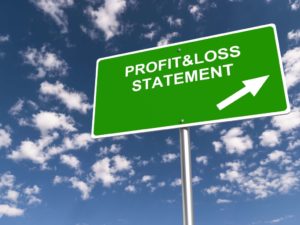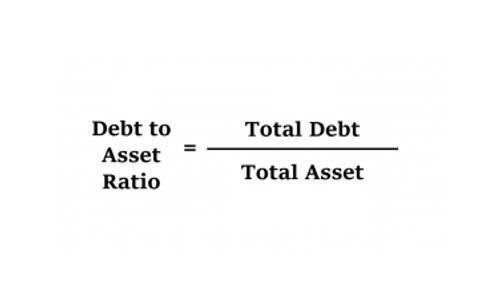
Revenues are deferred to a balance sheet liability account until they are earned in a later period. When the revenues are earned they will be moved from the balance sheet account to revenues on the income statement. The statement of cash flows (or cash flow statement) is one of the main financial statements (along with the income statement and balance sheet). Revenues are to be recognized (reported) on a company’s income statement when they are earned. Therefore, a company will report some revenues on its income statement before a customer pays for the goods or services it has received.
Notes to the Financial Statements
This standard emphasizes identifying performance obligations and recognizing revenue once those obligations are satisfied. A good accountant must have a complete grasp of all the important accounting concepts. This concept allows for the value of an asset to be noted in the balance sheet at the price at which it was purchased, or cost price, as opposed to the current price of that asset. Secondly, the concept has the limitations of the monetary unit itself.

What is Goods and Services Tax (GST)?
Only a proportionate value is shown as the expense in the year of purchase, and the remaining balance is shown as an asset on the balance sheet. The basic accounting principles listed here overlap with a handful of GAAP fundamental accounting concepts concepts, like matching and materiality, but do not cover all of them. For a full rundown of GAAP and what each concept means, see NerdWallet’s generally accepted accounting principles (GAAP) explainer. Major examples of the individual accounts found in a general ledger include asset accounts, liability accounts, and equity accounts. Each transaction recorded in a general ledger or one of its sub-accounts is known as a journal entry.

Time period (or periodicity) assumption
- By using these guidelines to standardize how you track and interpret accounting data, you can accurately compare financials from different time periods and gain a clear understanding of your business’s health.
- In this case, the cost of factory land maybe say $1 million, the office building $10 million, computers $10 million, office chairs and tables $2 million, raw materials $3 million etc.
- For example, the employees of an organisation are the most valuable asset to a business enterprise.
- A nongovernment group of seven members assisted by a large research staff which is responsible for the setting of accounting standards, rules, and principles for financial reporting by U.S. entities.
- It involves recording, analyzing, and interpreting financial transactions to provide an accurate picture of the company’s financial health.
Any other transfers or transactions which do not involve any money transfer are not recorded into the accounts books. Theory Base of Accounting consists of accounting concepts, principles, rules, guidelines, and standards that help an individual understand the basics of accounting. These Concepts are developed over time to bring consistency and uniformity to the accounting process. In case where application of one accounting concept or principle leads to a conflict with another accounting concept or principle, accountants must consider what is best for the users of the financial information. An example of such a case would be the trade off between relevance and reliability. Whether reliability of information may be compromised to ensure relevance of information is a matter of judgment that ought to be considered https://www.bookstime.com/ in the interest of the users of the financial information.

In this explanation we begin with brief descriptions of many of the underlying principles, assumptions, concepts, and qualities upon which the complex and detailed accounting standards are based. Examples include historical cost, revenue recognition, full disclosure, materiality, and consistency. The matching concept refers to reporting of the revenues and expenses in the same time period. The revenues and expenses of a company must be recognized by the company under the same accounting period. GAAP are the accounting principles that all regulated U.S. entities, including publicly traded companies, government agencies, and nonprofits, must follow. These rules were set and are periodically revised by the Financial Accounting Standards Board, an independent nonprofit organization whose members are chosen by the Financial Accounting Foundation.
IFRS is a set of accounting standards developed by the International Accounting Standards Board 1 (IASB). It’s the process of recording, classifying, summarizing, analyzing, and interpreting financial transactions. These provide additional information pertaining to a company’s operations and financial position and are considered to be an integral part of the financial statements. Some valuable items that cannot be measured and QuickBooks expressed in dollars include the company’s outstanding reputation, its customer base, the value of successful consumer brands, and its management team. As a result these items are not reported among the assets appearing on the balance sheet.
There are 13 important Accounting Concepts that are to be followed by companies to prepare true and fair financial statements. In preparing general-purpose financial statements, there are guidelines and principles that are understood by both the accountants who prepare them and the users of such reports are followed. While GAAP and IFRS have differences, they share the same core goal that emerged from the 1930s reforms—protecting investors through transparency and consistency.

PNC Layoffs: How Layoff Expenses Impact Financial Statements
Whichever you use, it’s important to understand the basics — even if you have small-business accounting software. That way, you can have productive conversations with your financial advisor or accountant. Businesses must account for overhead carefully, as it has a significant impact on price-point decisions regarding a company’s products and services.
- However, a large purchase would need to be disclosed because it could influence the economic decisions of users of the financial statements.
- Thus, if an amount is spent on an item that will be used in business for more than one year, it will not be proper to charge the entire amount from the revenues of the year in which the item is acquired.
- In order to differentiate a fact as material or immaterial, one should consider its nature and the amount involved.
- Expenses and liabilities should be recognized as soon as possible, even if uncertainty exists, while revenues and assets should only be recognized if they are certain.
- By comparison, fixed costs remain the same regardless of production output or sales volume.
Historical Cost
For example, a company purchases a plant and machinery for $100000, and its life span is ten years. According to this concept, some amount will be shown as expenses and the balance amount as an asset every year. Thus, if an amount is spent on an item that will be used in business for more than one year, it will not be proper to charge the entire amount from the revenues of the year in which the item is acquired.
